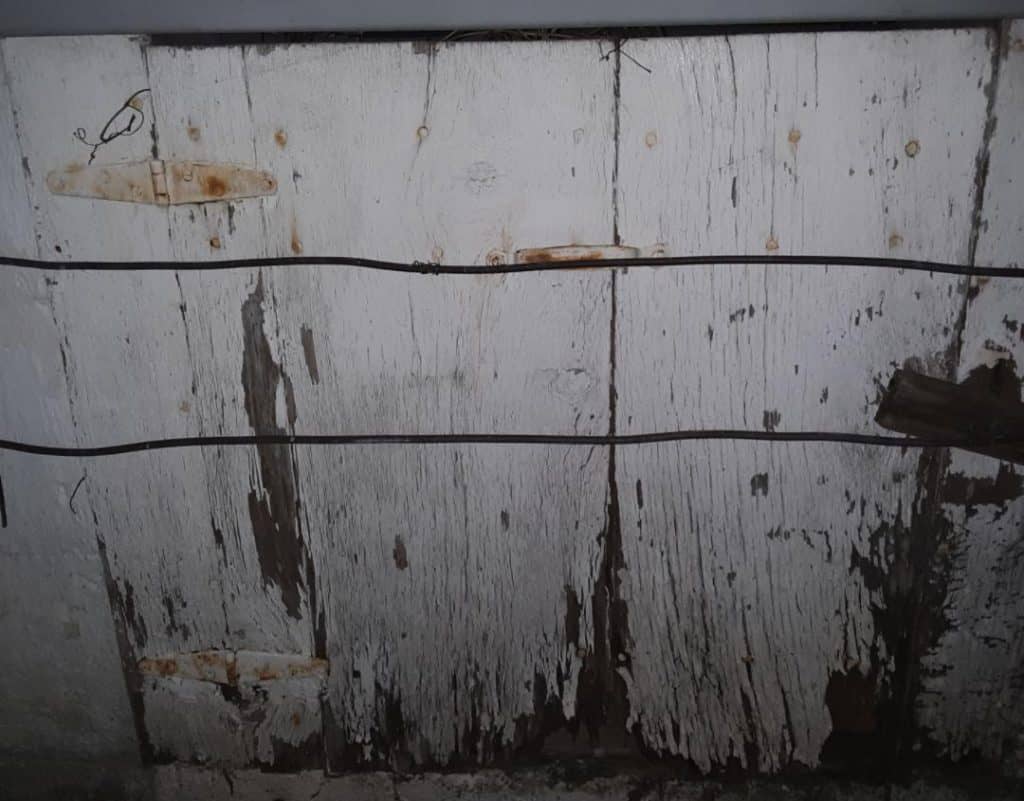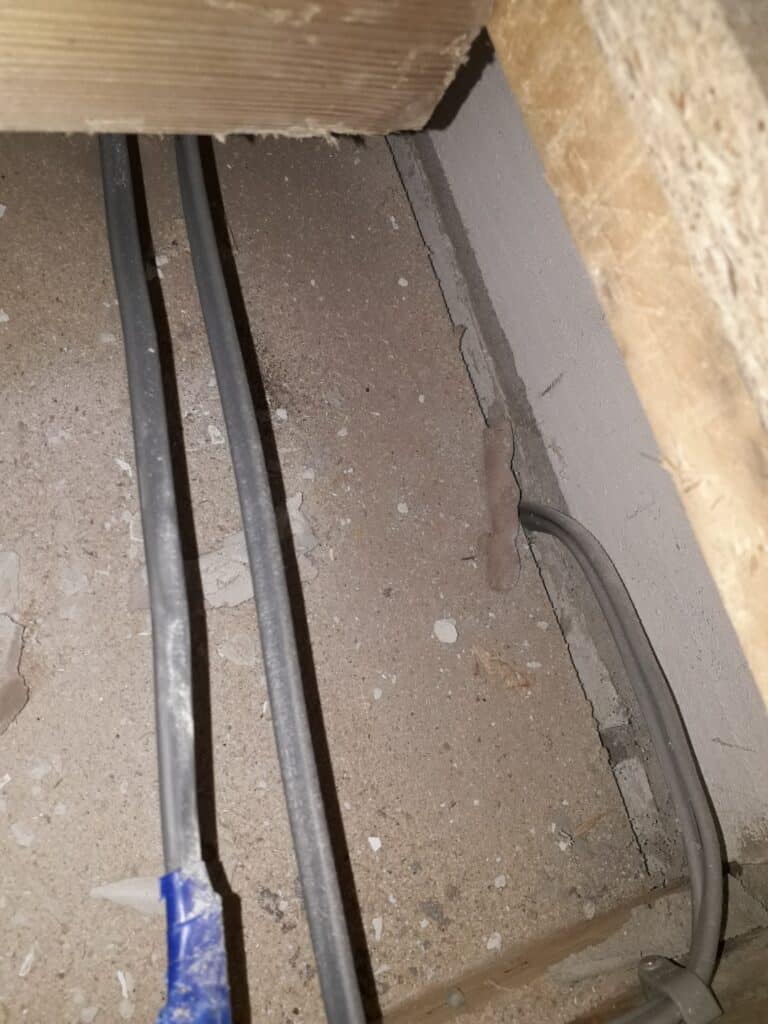When it comes to wiring, one of the first considerations to make is the type of wire you need to use. An even pressing matter when it comes to wiring in your trench, the attic, underneath drywall, or in your crawl space.
This gives rise to a very common question DIY-ers or inexperienced people ask — what kind of wire should you use in a crawl space? Do you need to use a wire rated for outdoor use or a non-metallic wire such as Romex would work just fine as well? Are there any protocols to follow when wiring in a crawl space?
At the end of the day, it depends entirely on where you are wiring, i.e., is it the attic crawl space or the basement? What are you using in your attic or basement? Are you passing the wire through studs or not? Whether you use a nonmetallic wire such as Romex or go for outdoor-rated wires depends on the crawl space is dry or damp.
What Kind of Wire Should You Use in A Crawl Space?

As mentioned above, the answer to this question depends on two factors;
- Where is the crawl space that you are trying to wire?
- Is it a damp crawl space or a dry crawl space?
Usually, crawl spaces are considered to be dry. If you find your crawl space damp, know that it might invite mold and that it’s very likely that there is a leak somewhere in your home. If you find your crawl space to be too damp, we recommend calling in a professional (or of course, do it yourself) to check a leak.
Before we get into the specifics, let us consider what classifies as a crawl space.
What Is A Crawl Space?
A crawl space is an unfinished and unoccupied space within or underneath a building. It is most commonly found between the ground and the “first” floor of the house. It shouldn’t be any larger than 1.5 meters tall, hence the name crawl space. Ideally, you should be able to just crawl in the space.
If a crawl space is taller than 1 to 1.5 meters, it would be classified as a basement and not a crawl space.
The primary benefit of a crawl space is that normally, houses tend to suck up water vapor from the earth via diffusion (caused by the pressure difference between the ground and crawl space) which enters the home gradually. Concrete houses can withstand this, such as those in Europe or Asia (except East Asia), but houses made out of drywall end up inviting mold, thus damaging the house.
Crawl spaces help mitigate this issue by creating a buffer between the damp ground and your house.
You can expect critters and other small animals to make their way into the crawl space along with a lot of dust and cobwebs. Remember, if you have dust allergies, we recommend you don’t crawl into this space, especially not without a mask.
Because of this and the fact that the ground underneath can be slightly damp, any wiring in the crawl space needs to be secured – not just against animals and environmental conditions but also to avoid injury in case you, an inspector, or a future resident decides to head into the crawl space.
Wiring in the Crawl Space – Things to Consider
When you are looking to wire in a crawlspace underneath your house, you need to secure them properly. We recommend that you run them in a conduit, but there is no law requiring you do to so, so long as you fasten everything properly. It is usually better that you pass all your wires around or the studs. If there are holes within your studs wide enough for the wire to pass through (you should have sufficient room, provided this is the first or second wire you are trying to pass through) pass them through the studs so that you end up having to deal with damaged wires.
If the crawl space is in your attic (which is there mostly for insulation purposes) and you are using it for nothing but storage, you need to use outdoor wire to protect the wire from your stored equipment and the equipment from any short circuits.
The reason you might need to wire through the crawlspace is if you need some floor outlets on the first floor (or floor directly above or below it). If your crawl space is normally dry, you can use non-metallic wires such as Romex. However, if you find that the crawl space is damp, we recommend using a UF (underground feeder) wire.
Generally, Thermoplastic Heat and Water-Resistant Nylon-coated wire or THWN wire is used in the US. It is the most common single conductor wires with robust insulation that can stand the test of time quite easily. Run the THWN through a PVC electrical conduit to make sure you don’t have to worry about rewiring or finding the wire damaged from any point.
This is one of the simplest solutions you could ask for when wiring your crawl space.
Running NM Wires Such as Romex in a Crawl Space
If you really must run nonmetallic wires in a crawl space, you need to run it on boards, especially if you are installing it parallel to the joists. As mentioned above, a crawl space isn’t considered a wet place generally. When installing an NM wire, make sure you staple it well and frequently to ensure there are no lags in the line.
Remember, running cable in any given crawl space is not really recommended but it isn’t prohibited, either. So, you need to know what the conduit is there to help you make the best of an accepted evil.
It is rather difficult if you are trying to run conduits in a crawl space – and it becomes even more so when looking to make sure those conduits look nice. Take hammer-space, for instance. You might not be able to position your arm the right way to hammer it all down properly. In our experience, you will find yourself using wrist motions to hammer the fasteners, if you don’t have a heavy-duty, battery-operated stapler.
A Quick How-To for Running A Wire In a Crawl Space

The thing about running a wire in your crawl space is that you don’t have to spend hours trying to make sure everything looks tidy and presentable, thus cutting down how much time you need to run the wire – despite the degree of difficulty involved.
Start by creating a plan. Check your floor plan, find out where switches are on the top floor and other appliances so that you can avoid making holes in those specific areas. You might need at least two floor plans for this.
Remember, respect the house, and it will respect you. Take your time here so that you don’t end up driving a nail through an electrical socket and thus, getting shocked.
Now, mark the holes according to the plan. Take a flashlight with you and a tape measure to find where you need to drill a hole.
We recommend drilling a hole from the top and shoving some wire down into the crawl space. Label the wire to help you identify what needs to go here.
The NEC code requires that holes must be at least 1 ¼ inch aware from the edge, so keep that in mind when drilling holes. Once done, pass the wire through. To make things easier, we recommend using a drill bit wider than your wire. This will help you slide it through the hole easily. Make sure you read the guide above to what kind of wire you should use in a crawl space and the appliance you are trying to wire for before making a decision here.
